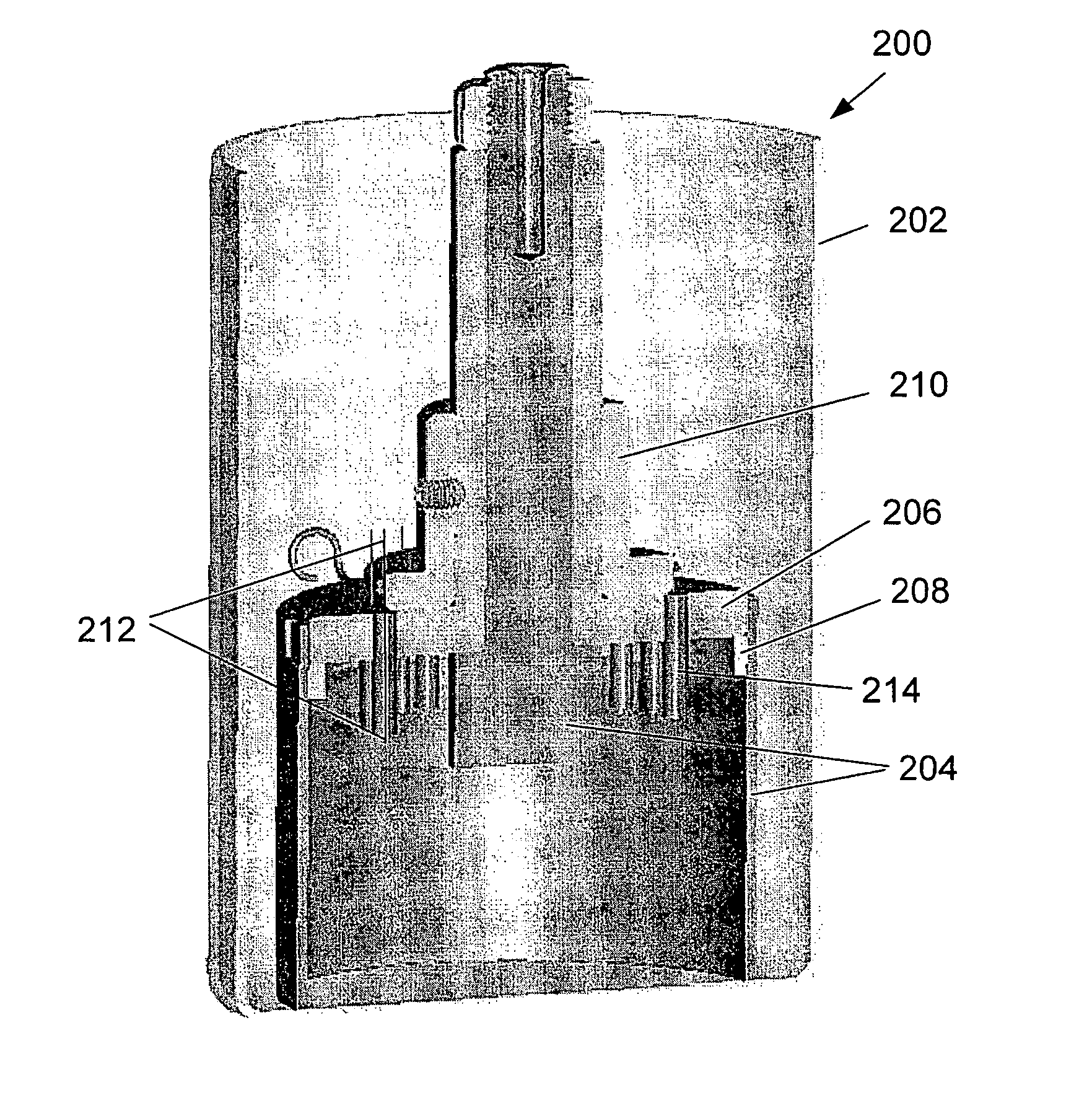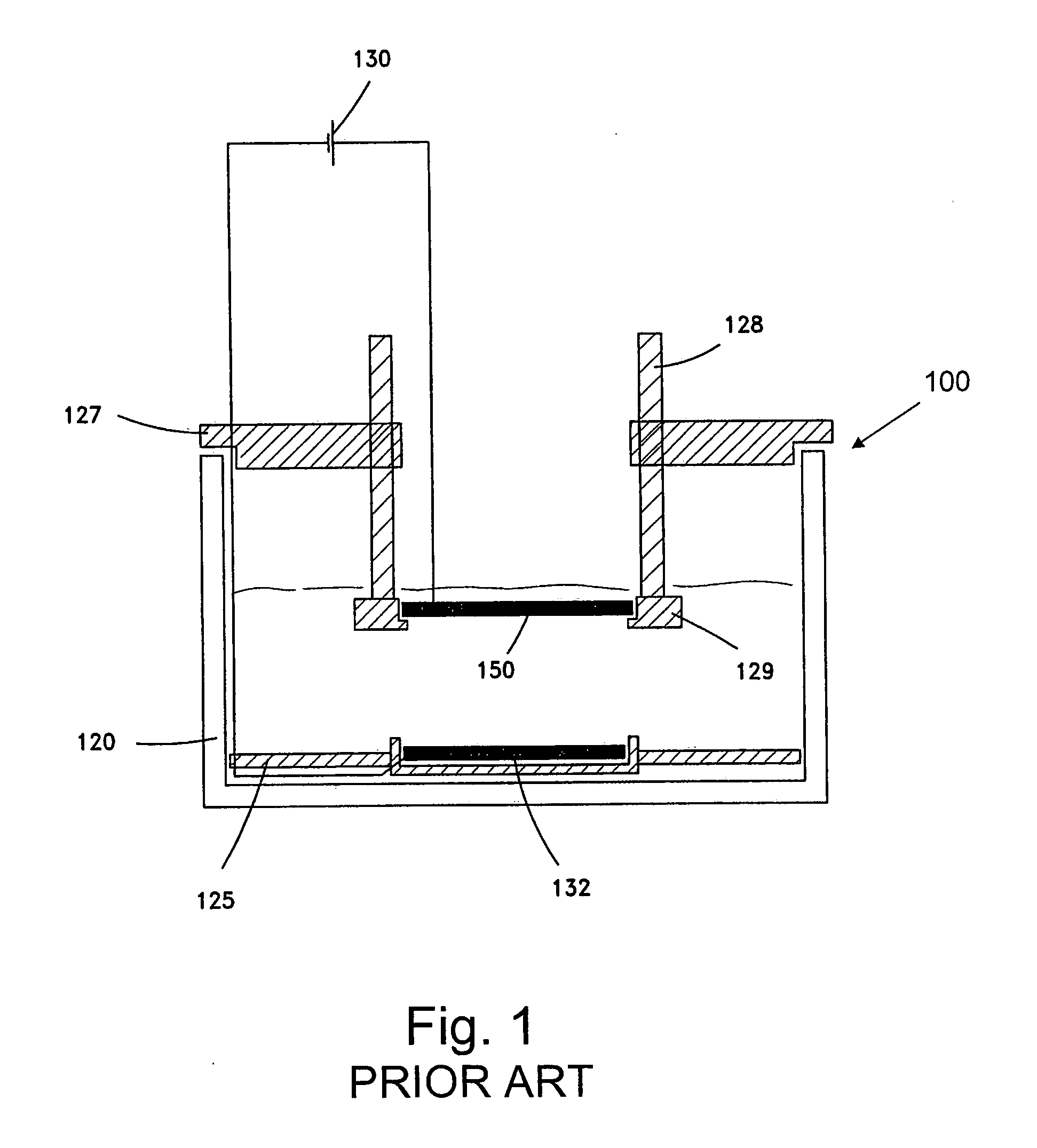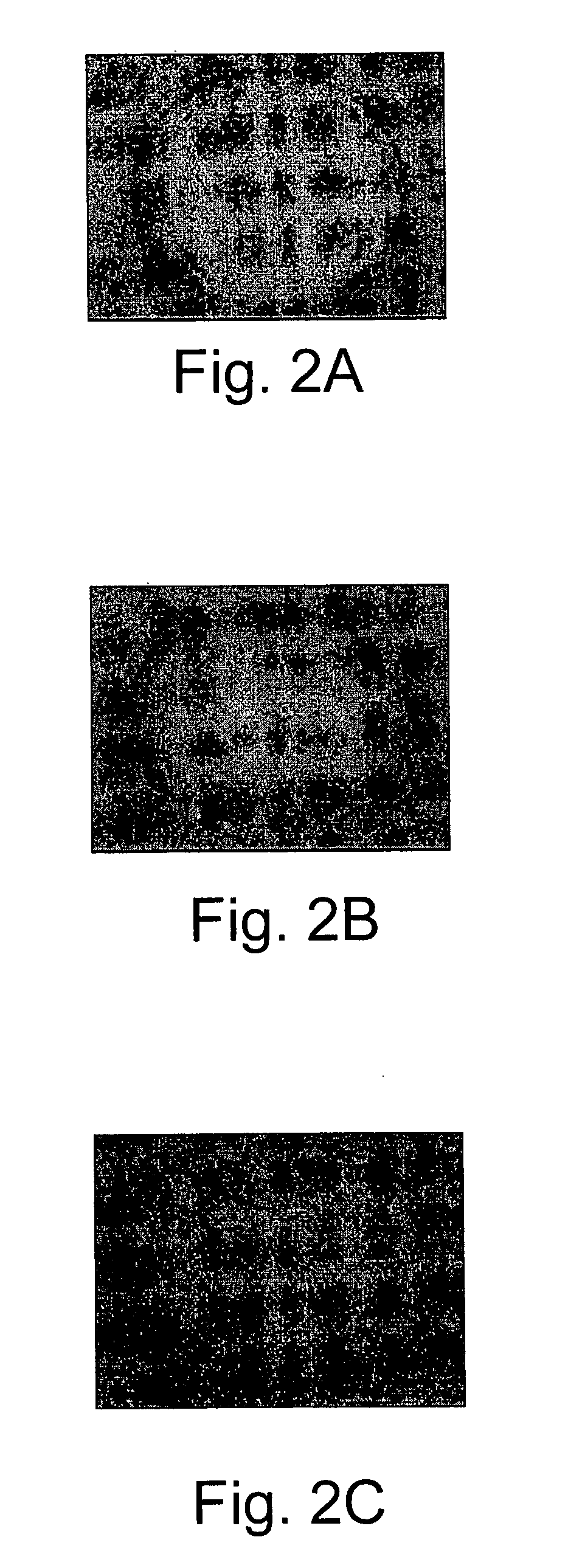Apparatus for manufacturing components using electrophoretic deposition
- Summary
- Abstract
- Description
- Claims
- Application Information
AI Technical Summary
Benefits of technology
Problems solved by technology
Method used
Image
Examples
example 1
Niobium Oxide Capacitor Anode Manufactured by Fixturing in a Capillary Tube and Immersing in an EPD Cell
[0132]FIGS. 11A and 11B are optical photographs showing an overall view and longitudinal cross section, respectively, of a green niobium oxide anode as deposited on a tantalum wire by EPD, produced by using a specially designed holder to fix the wire in position in a capillary tube in accordance with one of the embodiments of this invention.
[0133] The dispersion was prepared by dispersing 5 g capacitor grade niobium oxide powder in 100 ml of 2-Propanol. The suspension was subjected to ultrasonic treatment in a Fisher Scientific Sonic Dismembrator 550 at 20 KHz and a power level of 550 Watts for 5 minutes in pulse regime, 2 sec pulse on and 2 sec pulse off. 150 μl of Polyethylenimine 17 wt % aqueous solution was added to the suspension and pulsed sonification repeated for 1 minute. The dispersion was further stirred for 20 minutes. A dispersion pH in the range of 9 to 10 and con...
example 2
Restoring Particle Size Distribution by Agglomerate Sedimentation
[0136] A narrow particle size distribution was produced in niobium oxide dispersion, where the dispersion included large agglomerates. This process applies to both improvement of fresh dispersion by reducing dispersion particle size and narrowing particle distribution, and to restoring particle size distribution of used dispersion where particle size distribution has degraded due to particle agglomeration.
[0137] The niobium oxide dispersion was composed of the following material:
MaterialCatalog No.SupplierBatch No.Niobium Oxide powderNbO-0401Hermann209-2-1(NbO)Starck2-propanol (IPA)16260521BIO LAB40989Polyethylenimine181978Sigma AldrichNA(PEI 17%)
[0138] The equipment used for preparation of the dispersion and its characterization and measurements is as follows:
ApparatusDescriptionSupplierModelSonicatorUsed for particleFisher550 Sonicdispersion by sonic energyScientificdismembratorMastersizerMeasurement of partic...
PUM
| Property | Measurement | Unit |
|---|---|---|
| Fraction | aaaaa | aaaaa |
| Fraction | aaaaa | aaaaa |
| Diameter | aaaaa | aaaaa |
Abstract
Description
Claims
Application Information
 Login to View More
Login to View More - R&D
- Intellectual Property
- Life Sciences
- Materials
- Tech Scout
- Unparalleled Data Quality
- Higher Quality Content
- 60% Fewer Hallucinations
Browse by: Latest US Patents, China's latest patents, Technical Efficacy Thesaurus, Application Domain, Technology Topic, Popular Technical Reports.
© 2025 PatSnap. All rights reserved.Legal|Privacy policy|Modern Slavery Act Transparency Statement|Sitemap|About US| Contact US: help@patsnap.com



